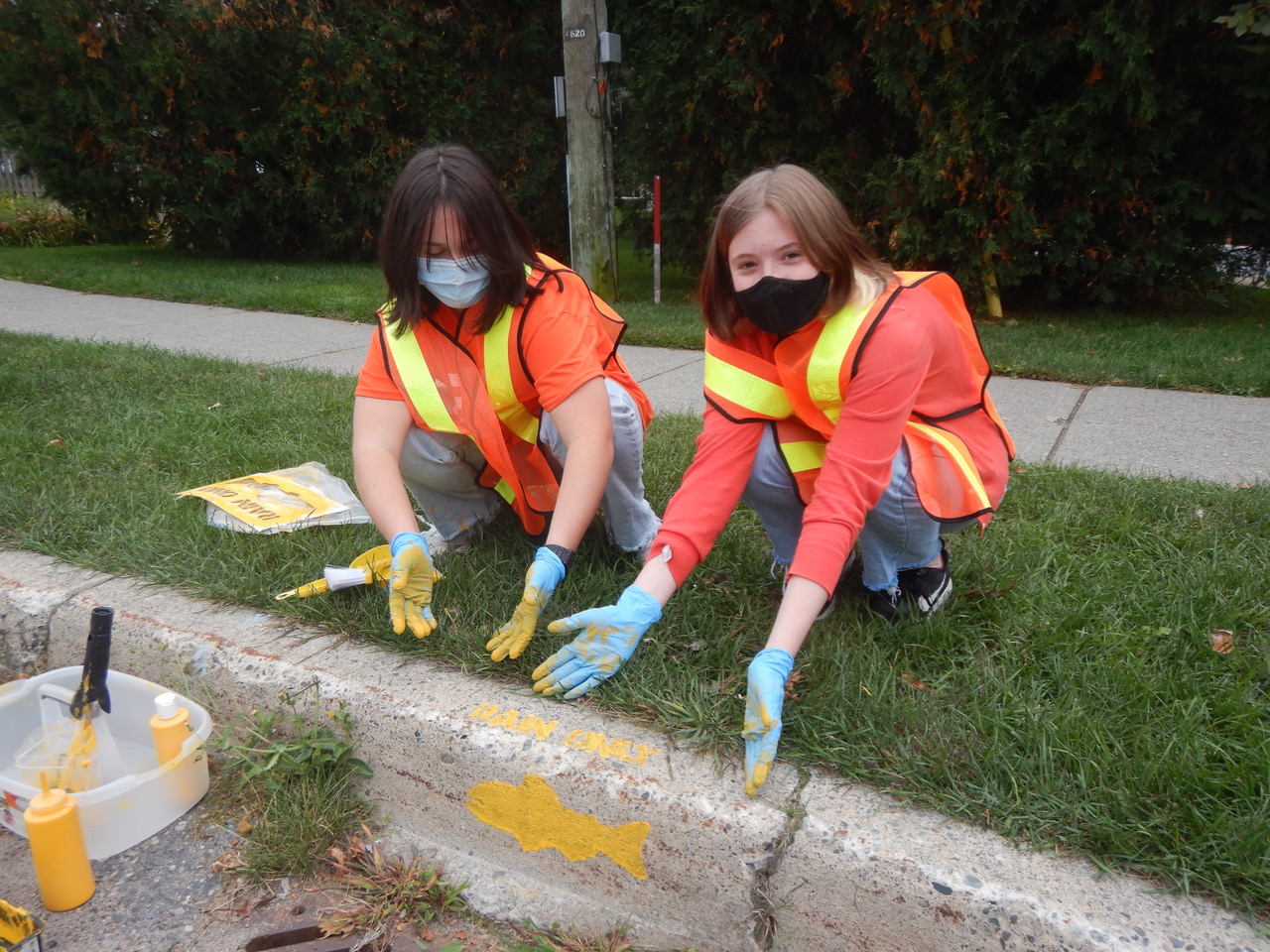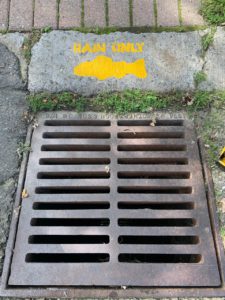There are yellow fish in the Nepahwin Lake watershed, but they’re not in the water.
Teacher Colin Veevers says students were provided with brushes and stencils to paint yellow fish symbols with the words ‘Rain Only’ on area storm drains.
He says it’s all part of Trout Unlimited Canada’s Yellow Fish Road™ education campaign and a collaborative project between several local partners.
Veevers adds students also distributed Yellow Fish Road™ fish-shaped door hangers and information on road/rock salt alternatives for driveway ice removal to area households.
Students learned that drains are open doorways to rivers, lakes and streams for pollutants such as soap, fertilizer, litter, pet feces, cleaners, road salt, used motor oil and automotive fluids, paint and solvents. In the Lo-Ellen Park neighbourhood, all the water that goes into the stormwater drain goes, untreated, directly into Nepahwin Lake. “Household waste entering storm drains can harm fish and wildlife and reduce lake water quality,” said Grade 11 student Nathan Gravel. “We all need to remember “Only Rain Goes Down the Drain”.”
Run-off from lawns and driveways during rain events or snow melts accounts for much of the contaminants entering storm drains. “There are several ways that citizens can manage their own properties to help keep contaminants out of our waterways,” said Miranda Virtanen, Executive Director, Junction Creek Stewardship Committee. “These include not using pesticides, herbicides or phosphorus containing fertilizers, picking-up pet waste, avoiding fuels, antifreeze, and other chemical spills, using proper waste disposal and picking up litter, using salt alternatives for driveway ice removal and using a vegetation buffer and gravel instead of pavement to help filter stormwater.”
Nepahwin Lake watershed storm drains, located by curbs, empty into the lake via 20 drainage discharge sites, seven of which have oil-grit separators to help remove oils, debris and sediment. However, substances that dissolve in water go untreated into the lake.
With increasing urbanization in the Nepahwin Lake watershed over the past decades, run-off of dissolved substances such as phosphorus and chloride into storm drains have led to increased levels in the lake. “Phosphorus levels had reached a high enough level in 2019 for the City of Greater Sudbury to designate Nepahwin Lake as a waterbody requiring ‘enhanced management’,” said Mandy Hey, Co-chair of the Nepahwin Lake Watershed Stewardship Group.
She added: “It is our hope that with few new land developments happening in the watershed and adherence to Sudbury’s 2012 Lawn Fertilizer By-Law, phosphorus levels may flatten or decline. Chloride levels, however, have reached levels higher than is safe for the protection of aquatic life. Most of the chloride comes from road or rock salt used on municipal roads, private or commercial parking lots or residential driveways.”
Mandy Hey said a consequence of high chloride levels can be the decline in microscopic zooplankton that graze on algae. In recent years, Nepahwin Lake has experienced decreased water clarity, increased growth of native and invasive aquatic plants, and blue green algae blooms.




